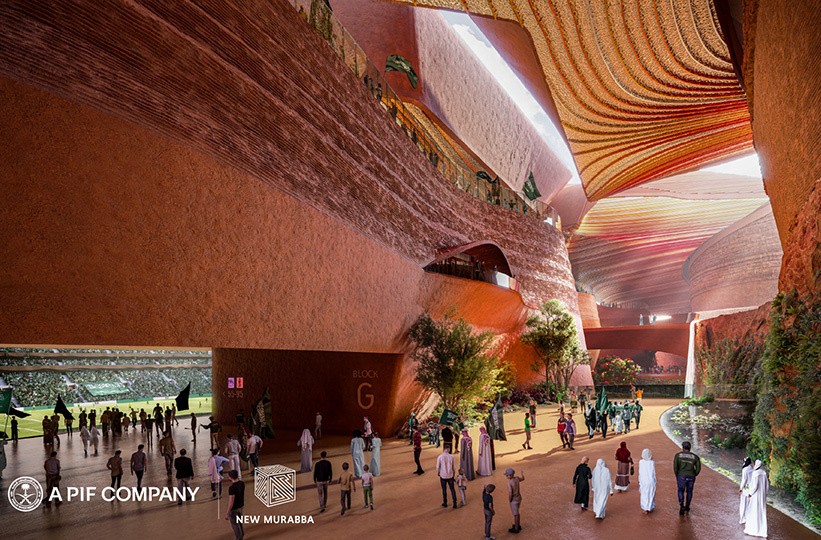Riyadh Reveals New Murabba Stadium Architectural Design for 2034 World Cup
Riyadh, Saudi Arabia has finally showed the New Murabba Stadium, designed as a centerpiece for the 2034 FIFA World Cup.
Parametric Architecture reported that the New Murabba Development Company (NMDC), part of the Public Investment Fund (PIF), revealed the stadium's design. The stadium is scheduled to open in 2032.
The stadium will be part of the expansive New Murabba development, a key project under the Saudi Vision 2030.
New Murabba Stadium's Architectural Design

The New Murabba Stadium's architecture is a blend of tradition and modern design, with a facade inspired by the Acacia tree, native to the Wadi Hanifa Valley. The design reflects Saudi Arabia's cultural and natural heritage, incorporating "layered overlapping planes and peeling planar texture" reminiscent of the tree's bark.
Also Read : 8 Modern Architectural Sites Made By Black Americans to be Awarded with Preservation Grants
New Murabba Stadium will cover over 25 million square meters and will be a mixed-use community hub, integrating cutting-edge technology to offer an immersive fan experience. Currently in the excavation phase, it will stand 400 meters high, 400 meters wide, and 400 meters long. It will feature 9,000 hotel rooms, extensive retail and shopping spaces, and 104,000 residential units.
With all amenities within a 15-minute walking radius, the development aims to attract both residents and tourists, enhancing Riyadh's status as a leading city for cultural and sports experiences.
According to Michael Dyke, CEO of NMDC, the stadium signifes Riyadh's commitment to becoming a world-class destination for all things sports and entertainment.
"The New Murabba Stadium embodies our commitment to transforming Riyadh into a global destination for sports and entertainment." Based on Dyke's statement, the stadium will host not only World Cup matches but also various gaming competitions and exhibitions, establishing Riyadh as a premier destination for global events.
The project is expected to contribute to the nation's economy, creating 334,000 jobs by 2030.
From Digital Models to 3D-Printed Homes: Jaspreet Kaur Lall Explains How the Innovation Changes the Construction Industry

Future Belongs to Green Construction: Sampath Kumar Paspunoori Explains One of the Key Trends in the Construction Industry

Kamala Harris' Campaign Ad Uses Iconic Visuals from Carrie Mae Weems to Connect with Voters

Historic Ancient Roman Ruins in Baalbek Remain Strong After Israeli Air Strikes; Locals Seek Cultural Protection

4 Ways to Honor Departed Loved Ones in Your Home Design














